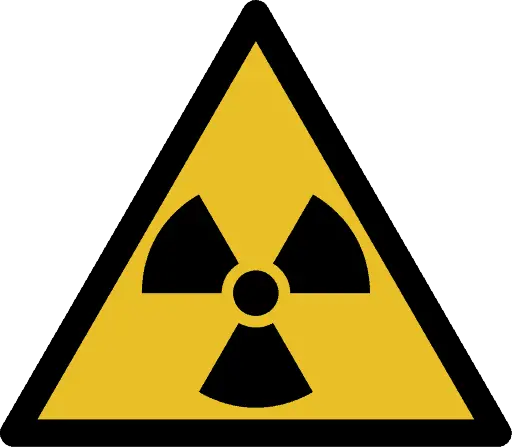
Radioactive contamination is referred to as the presence of an unwanted radioactive substances on surfaces, or within solids (including the human body), liquids or gases, where their presence is unintended or undesirable. Radioactive contamination consist of radioactive atoms (material) that have escaped the system or structure that would normally contain them. Since radioactive contamination is radioactive material, ionizing radiation is emitted by the contamination. It is very important, which material (which radioisotope) is the radioactive contaminant. It is also very important to distinguish between radioactive contamination and radiation itself.
Decontamination
Decontamination is a process used to reduce, or remove radioactive contamination to reduce the risk of radiation exposure. The removal of contamination from occupied areas, equipment and personnel is important to maintain an ionizing radiation dose as low as reasonably achievable (ALARA). Decontamination also reduces background radiation levels, radioactive material inventory, and the spread of contamination to uncontrolled areas, equipment and personnel.
Decontamination may be accomplished by cleaning or treating surfaces to reduce or remove the contamination. It may be also accomplished by filtering contaminated air or water or by covering the contamination to shield or absorb the radiation. The process can also simply allow adequate time for natural radioactive decay to decrease the radioactivity.
In nuclear power plants, it is inevitable that many items of equipment, and also tools, clothing, work areas, and even people will become contaminated. This is quite common, that some of radioactive material becomes attached to surfaces (e.g. the sole of a shoe). In this case, workers are continuously monitored and in this case, surface contamination must be removed. We can rid of contamination by many mechanical, chemical (decontaminate surfaces). Biological processes (biological half-life) always work in case of internal contamination. A person becomes ‘radioactive’ if dust particles containing various radioisotopes land on the person’s skin or garments. Once a person has been decontaminated by clothes removal and dermal scrubbing, all of the particulate radioactivity sources are eliminated, and the individual is no longer contaminated.
Decontamination Techniques
In general, there are many techniques and equipment used for decontamination surfaces and persons. In any case, type of contamination and contaminated material matters. For example, it is very difficult to decontaminate porous materials. As a general orientation to the reader, these decontamination techniques and their main applications are highlighted in:
Special Reference: State of the Art Technology for Decontamination and Dismantling of Nuclear Facilities, IAEA. IAEA Vienna, 1999. ISBN 92–0–102499–1.
- Chemical Decontamination. Chemical decontamination is one of the best method for most decontamination operations is to clean with water to which one or more suitable chemical cleaning agents have been added. These methods include decontamination using chemical solutions, chemical gels, foam decontamination etc. Removing contamination from personnel must be done carefully to ensure the skin is not damaged, and to prevent contamination from entering the body or a wound.
- Mechanical Decontamination. Mechanical decontamination can be used especially for industrial decontamination. There are decontamination methods in which the outer layer of the contaminated surface is removed by physical force. Such methods are effective, but they are somewhat crude and destructive, and it may not be possible to use them on delicate objects. These methods include decontamination using steam cleaning, abrasive cleaning, sandblasting, vacuum cleaning, ultrasonic cleaning etc.
We hope, this article, Decontamination – Radiation Protection, helps you. If so, give us a like in the sidebar. Main purpose of this website is to help the public to learn some interesting and important information about radiation and dosimeters.